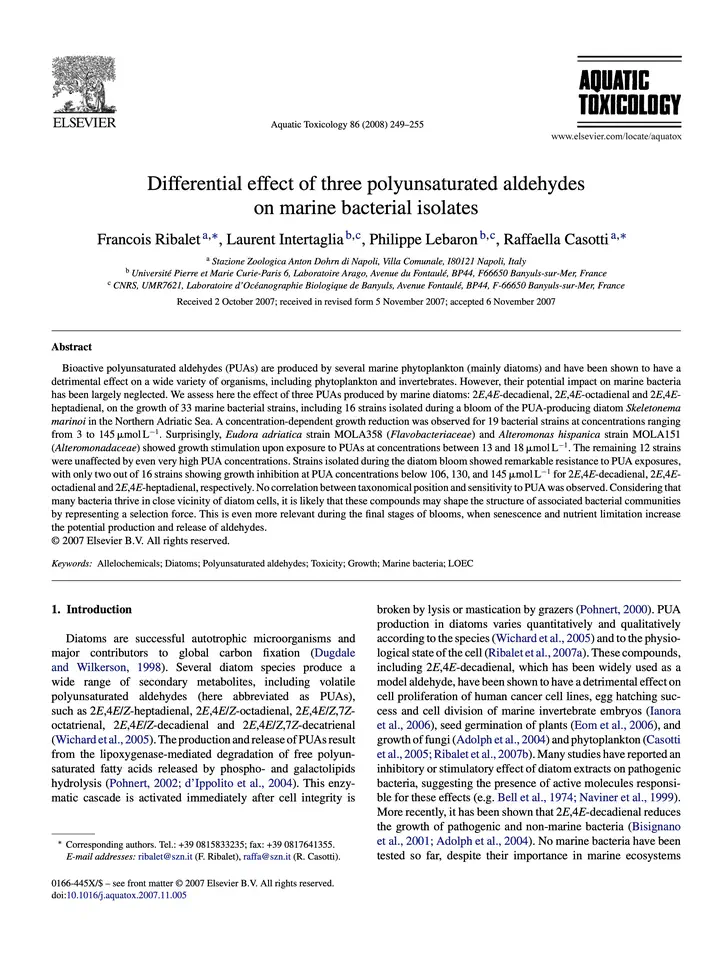
Abstract
Bioactive polyunsaturated aldehydes (PUAs) are produced by several marine phytoplankton (mainly diatoms) and have been shown to have a detrimental effect on a wide variety of organisms, including phytoplankton and invertebrates. However, their potential impact on marine bacteria has been largely neglected. We assess here the effect of three PUAs produced by marine diatoms: 2E,4E-decadienal, 2E,4E-octadienal and 2E,4E-heptadienal, on the growth of 33 marine bacterial strains, including 16 strains isolated during a bloom of the PUA-producing diatom Skeletonema marinoi in the Northern Adriatic Sea. A concentration-dependent growth reduction was observed for 19 bacterial strains at concentrations ranging from 3 to 145 $μ$mol L -1 . Surprisingly, Eudora adriatica strain MOLA358 (Flavobacteriaceae) and Alteromonas hispanica strain MOLA151 (Alteromonadaceae) showed growth stimulation upon exposure to PUAs at concentrations between 13 and 18 $μ$mol L -1 . The remaining 12 strains were unaffected by even very high PUA concentrations. Strains isolated during the diatom bloom showed remarkable resistance to PUA exposures, with only two out of 16 strains showing growth inhibition at PUA concentrations below 106, 130, and 145 $μ$mol L -1 for 2E,4E-decadienal, 2E,4E-octadienal and 2E,4E-heptadienal, respectively. No correlation between taxonomical position and sensitivity to PUA was observed. Considering that many bacteria thrive in close vicinity of diatom cells, it is likely that these compounds may shape the structure of associated bacterial communities by representing a selection force. This is even more relevant during the final stages of blooms, when senescence and nutrient limitation increase the potential production and release of aldehydes. © 2007 Elsevier B.V. All rights reserved.